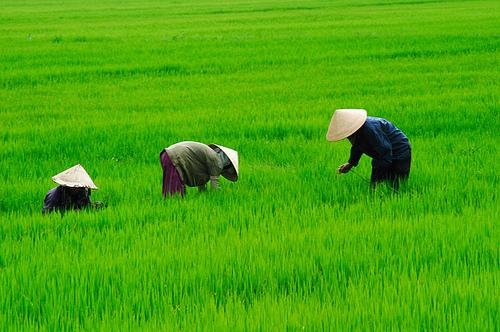Topography
Vietnam has five main land regions. The North consists of the Northern Highlands and the Red River Delta, and the South is made up of the Annamite Mountain Range, the Coastal Lowlands, and the Mekong Delta.
It has a sizeable mountain range in the northwest (an offshoot of the Himalayas), heavily forested uplands, extensive limestone scenery with several areas of mature ‘Karst’ landscape, an elevated central plateau, two large river deltas and thousands of offshore islands.
Although all this makes life difficult for most of the 70% of the population that still work the land, it has great benefits for visitors in the form of a wide variety of landscapes.
Lush green paddy patchworks, vertiginous mountain terracing, tea and coffee plantations, pepper and pineapple fields, salt pans, flood dykes and drainage canals: the ways in which the people have adapted the land to agriculture with the beauty of the natural landscapes for the photographers’ attention.
From a visitor’s point of view, such geographical diversity is part of Vietnam’s attraction. Icy mountain streams and boiling hot mineral springs, sheer cliffs to challenge even the best rock climber, deep caves and underground rivers, many unexplored, serene freshwater lakes, white sand beaches – Vietnam has all this, and much more.
Various Bio-diversity
Vietnam’s wide range of fauna, flora and marine species places it in the top ten countries for the variety of its bio-diversity. Large National Parks, forests and marine coastal zones are home to some of the most endangered species in the world, and are often unique to Vietnam. Elephants, tigers, rhinoceros, black bears,crocodiles are some of the larger species still living in remote areas.
Several of Vietnam's forests and wetlands are rich in birdlife, with many rare species.

Aquatic and semi-aquatic species include large pelagic fish and mammals, such as dolphins, sharks, rays and the occasional whale. Turtles and dugongs visit some of the more remote islands in the south. Corals and marginal plant species such as mangroves and sea-grasses can be seen in many locations.
Plant life varies from rhododendrons and deciduous trees in the mountainous north, cactus plants and pines in the dry central areas, dripping vines, exotic orchids and ancient trees in the primitive forests, and lush palms and fruits in the tropical south.






































































































